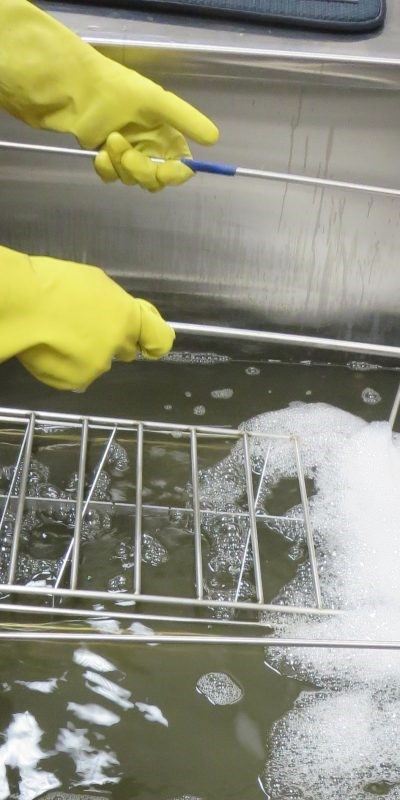When items need to be cleaned to an exacting standard, good old-fashioned elbow grease often simply won’t cut the mustard. This is especially the case within hospitals, where any dirt that remains after cleaning can cause bacteria to grow, potentially putting vulnerable patients’ lives at risk in the worst cases.
For over 10 years, the NHS has been employing ultrasonic cleaning techniques to ensure that items are microscopically clean.
The science bit
Ultrasonic cleaning uses sound waves to remove any contamination from surfaces. The item in need of cleaning is submerged in a water tank, where the water has an additional cleaning solution. At this point, the magic of ultrasound does its work, with sound waves applied to the water using transducers.
Working in a similar way to the electrolysis experiments you may have completed when in school, the ultrasonic waves agitate the water. In conjunction with the cleaning solution added to the water, they remove any dirt and contamination from the items in the tank to make the items sparkling clean.

What can be cleaned in this way?
Almost anything you may require to be cleaned to a high standard for hygienic purposes or to avoid any kind of contamination can be cleaned in an ultrasonic cleaner. Small ultrasonic cleaners are regularly used by jewellers to produce a great shine on rings, necklaces and other items. They can also be used to clean baby toys or even food. Medium-sized tabletop cleaners are great for cleaning lab equipment such as test tubes and Petri dishes. At the top end of the size scale is a large ultrasonic cleaner from a specialist such as https://www.hilsonic.co.uk/. These are used on an industrial scale for cleaning large items.
The larger ultrasonic cleaners can run almost permanently due to their design and heavy-duty construction.
How long does it take?
Small items that are lightly soiled can take a few seconds to become clean in an ultrasonic cleaner. Larger items that are more heavily soiled can take longer, with a maximum time of around ten minutes. Of course, this all depends on a combination of how dirty an item is, how large it is, and how clean it needs to be. Some items may need two cycles through the cleaner to be cleaned to the required standard.









